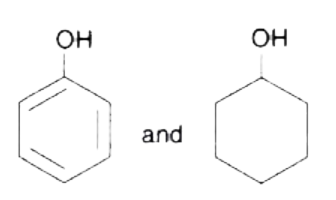Distinguish between the following pairs of terms:
Egg and sperm .........
Step-by-Step Solution:
1. Definition of Egg and Sperm:
- Egg: The egg is the female gamete, which is involved in reproduction.
- Sperm: The sperm is the male gamete, which is also involved in reproduction.
2. Motility:
- Egg: The egg is a non-motile structure, meaning it does not move on its own.
- Sperm: The sperm is a motile structure, equipped with a flagellum (tail) that allows it to swim and move towards the egg.
3. Size:
- Egg: The egg is the largest cell in the human body.
- Sperm: The sperm is the smallest cell in the human body.
4. Cytoplasm Content:
- Egg: The egg contains a large amount of cytoplasm, which provides nutrients for the developing embryo.
- Sperm: The sperm contains a small amount of cytoplasm, as it is designed primarily for mobility.
5. Chromosome Composition:
- Egg: The egg contains only X chromosomes.
- Sperm: The sperm can contain either X or Y chromosomes, determining the sex of the offspring.
6. Production Site:
- Egg: Eggs are produced in the ovaries.
- Sperm: Sperm are produced in the testes.
7. Activity Level:
- Egg: The egg is inactive until fertilization occurs.
- Sperm: The sperm is active and travels through the female reproductive system to fertilize the egg.
Summary of Differences:
- Gamete Type: Egg (female) vs. Sperm (male)
- Motility: Egg (non-motile) vs. Sperm (motile)
- Size: Egg (largest cell) vs. Sperm (smallest cell)
- Cytoplasm: Egg (large amount) vs. Sperm (small amount)
- Chromosomes: Egg (X only) vs. Sperm (X and Y)
- Production: Egg (ovaries) vs. Sperm (testes)
- Activity: Egg (inactive) vs. Sperm (active)
- Egg: The egg is the female gamete, which is involved in reproduction.
- Sperm: The sperm is the male gamete, which is also involved in reproduction.
- Egg: The egg is a non-motile structure, meaning it does not move on its own.
- Sperm: The sperm is a motile structure, equipped with a flagellum (tail) that allows it to swim and move towards the egg.
- Egg: The egg is the largest cell in the human body.
- Sperm: The sperm is the smallest cell in the human body.
- Egg: The egg contains a large amount of cytoplasm, which provides nutrients for the developing embryo.
- Sperm: The sperm contains a small amount of cytoplasm, as it is designed primarily for mobility.
- Egg: The egg contains only X chromosomes.
- Sperm: The sperm can contain either X or Y chromosomes, determining the sex of the offspring.
- Egg: Eggs are produced in the ovaries.
- Sperm: Sperm are produced in the testes.
- Egg: The egg is inactive until fertilization occurs.
- Sperm: The sperm is active and travels through the female reproductive system to fertilize the egg.
- Gamete Type: Egg (female) vs. Sperm (male)
- Motility: Egg (non-motile) vs. Sperm (motile)
- Size: Egg (largest cell) vs. Sperm (smallest cell)
- Cytoplasm: Egg (large amount) vs. Sperm (small amount)
- Chromosomes: Egg (X only) vs. Sperm (X and Y)
- Production: Egg (ovaries) vs. Sperm (testes)
- Activity: Egg (inactive) vs. Sperm (active)
Topper's Solved these Questions
- REPRODUCTION IN HUMANS BOOK - ICSECHAPTER - REPRODUCTION IN HUMANS EXERCISE - REVIEW QUESTIONS (Long Answer Questions)
2 Videos
- REPRODUCTION IN HUMANS BOOK - ICSECHAPTER - REPRODUCTION IN HUMANS EXERCISE - REVIEW QUESTIONS (Long Answer Questions)
2 Videos
- NERVOUS SYSTEMBOOK - ICSECHAPTER - NERVOUS SYSTEMEXERCISE - REVIEW QUESTIONS (LONG ANSWER QUESTIONS)
11 Videos
- REPRODUCTION IN PLANTSBOOK - ICSECHAPTER - REPRODUCTION IN PLANTSEXERCISE - Review Questions - Long Answer Questions
9 Videos
Similar Questions
Distinguish between the following pairs of terms:
Budding and regeneration : .........
View SolutionDistinguish between the following pairs of terms:
Sexual reproduction and asexual reproduction ...........
View SolutionHow will you distinguish between the following pairs of gases:
Hydrogen and Oxygen.
View SolutionHow will you distinguish between the following pairs of terms:
(i) Tetrahedral and octahedral voids
(ii) Crystal lattice and unit cell
View SolutionWrite chemical tests to distinguish between the following pairs of compounds :
Ethanal and propanal.
View SolutionDistinguish between the following pairs of sciences:
Ichthyology and Pisciculture
View SolutionGive a chemical test to distinguish between the following pairs of compounds:

View SolutionGive simple chemical tests to distinguish between the following pairs of compounds :
(a) Ethanal and Propanal
(b) benzoic acid and phenol
View SolutionGive any chemical test to distinguish between the following pair of compounds : acetine and phenol.
View SolutionGive one chemical test to distinguish between the following pairs of compounds :
Ethanol and 2 propanol.
View Solution